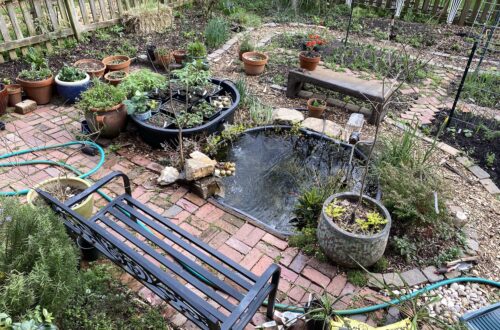The Big Dig – Building Our Backyard Pond
“I dig deep thoughts and appropriately sized holes”, my current Instagram tagline, makes me giggle. I didn’t anticipate digging such an insanely big hole this spring, but I’d been worrying about how large the koi were growing and pointing out spots in the yard to Joe where a pond would fit. Right as I was growing resigned to selling off the koi, Joe decided the gravel firepit was the perfect site for the new pond and started clearing the gravel. When your spouse gets a burst of new project energy, you don’t question it. You grab a shovel and save as many plants as you can. We embarked on a two-month journey of digging, researching pond pumps, liners and skimmers, and building.
We broke ground on the new pond on May 12, 2023. A friend asked if we had a plan or if we just started digging and planning as we went. Here is the sketch showing that there was a plan; however, the plumbing evolved as we excavated the bog area, watched some great YouTube videos on skimmers and waterfalls, and changed our approach to the skimmer. The location of the gravel bog filter and the general contours are close to what we built.
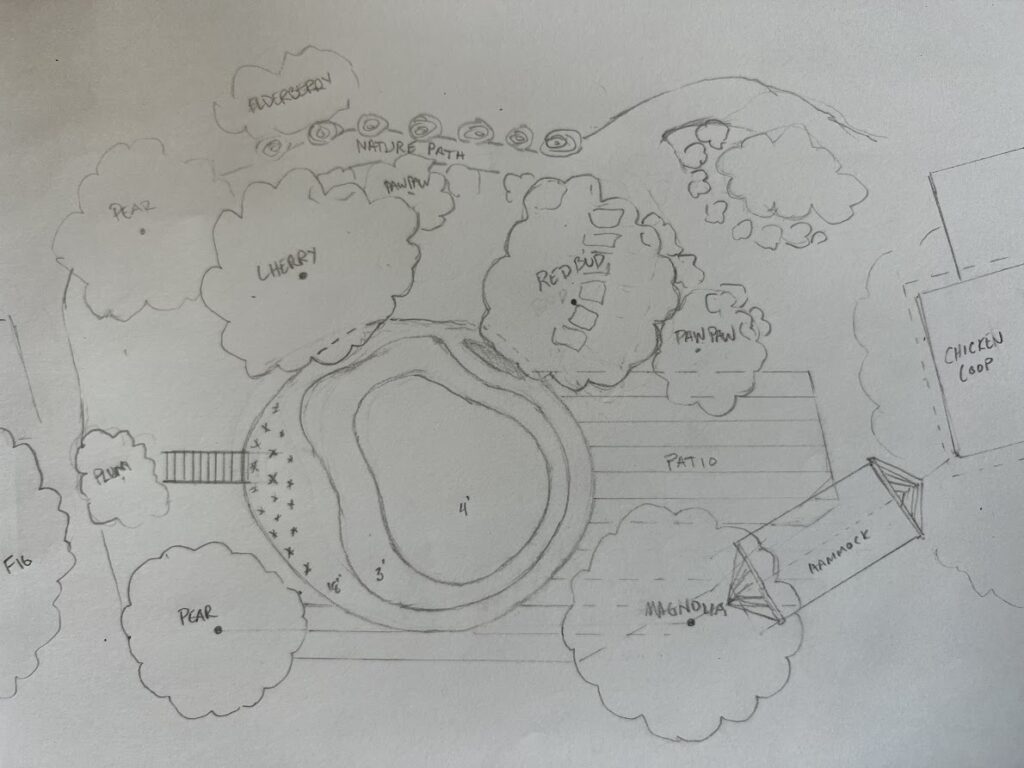
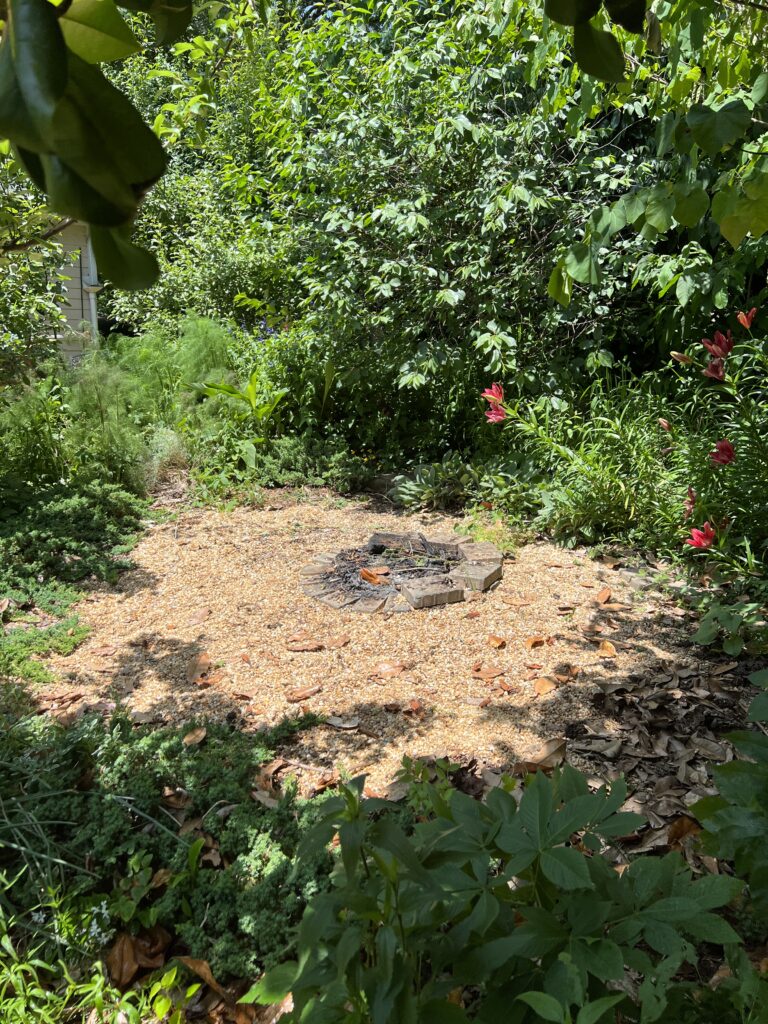
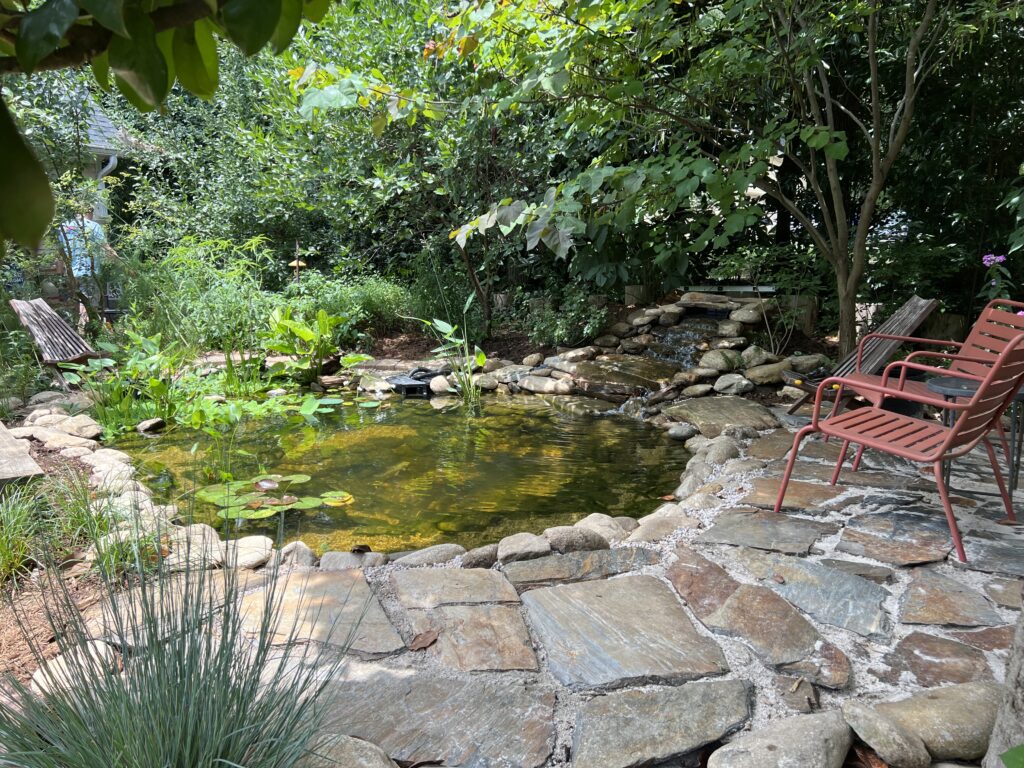
Pond Size
Our pond is approximately 12′ x 17′ on its two major axes. We dug down to 4′ in the deepest pool and included two shelves at 36″ and 18″ from the top of bank. The water depths with the addition of the Firestone PondGard 45 Mil 20 x 25-Feet EPDM Pond Liner, rocks and gravel are 42″, 27″ and 12″. A rough estimate of the volume is 2,700 gallons with about 150 gallons attributed to the gravel bog filter. The rock work was the most labor intensive and frustrating. As the water level rose, rocks shifted, and had to reposition them. We ended up using 5 tons of medium and large Cane Creek stones and at least a ton of pea gravel, but really could have benefited from another ton or two of small stones to fill in gaps. We joked about how we dug out so many rocks with the dirt only to fill the hole back in with more rocks.
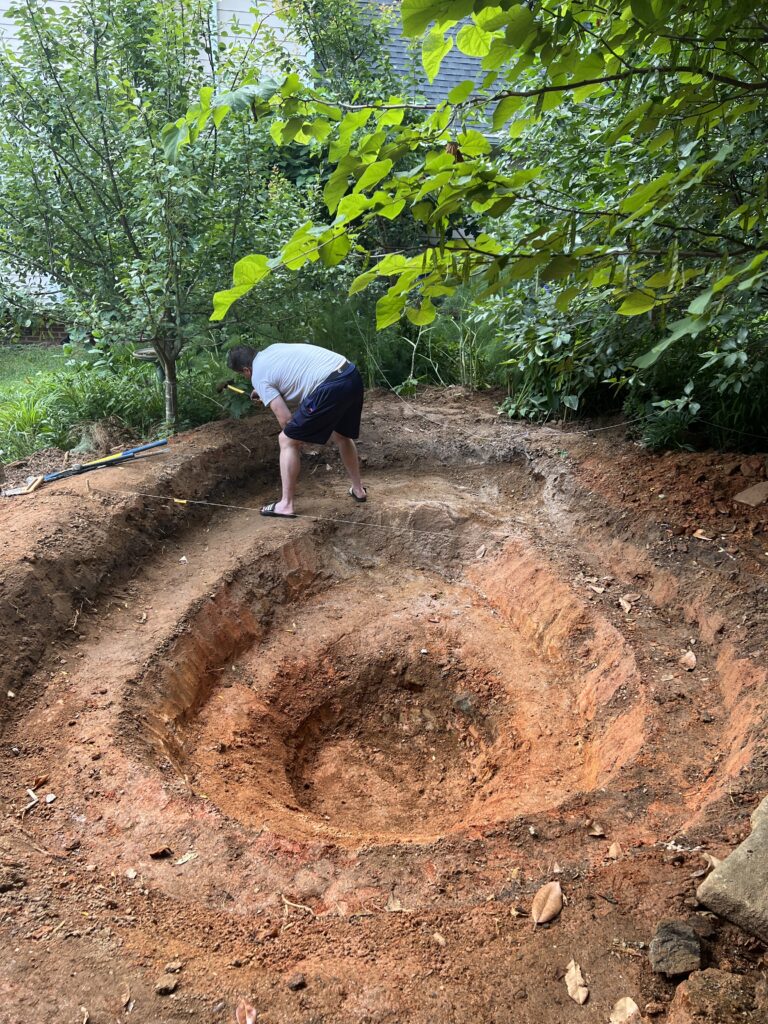
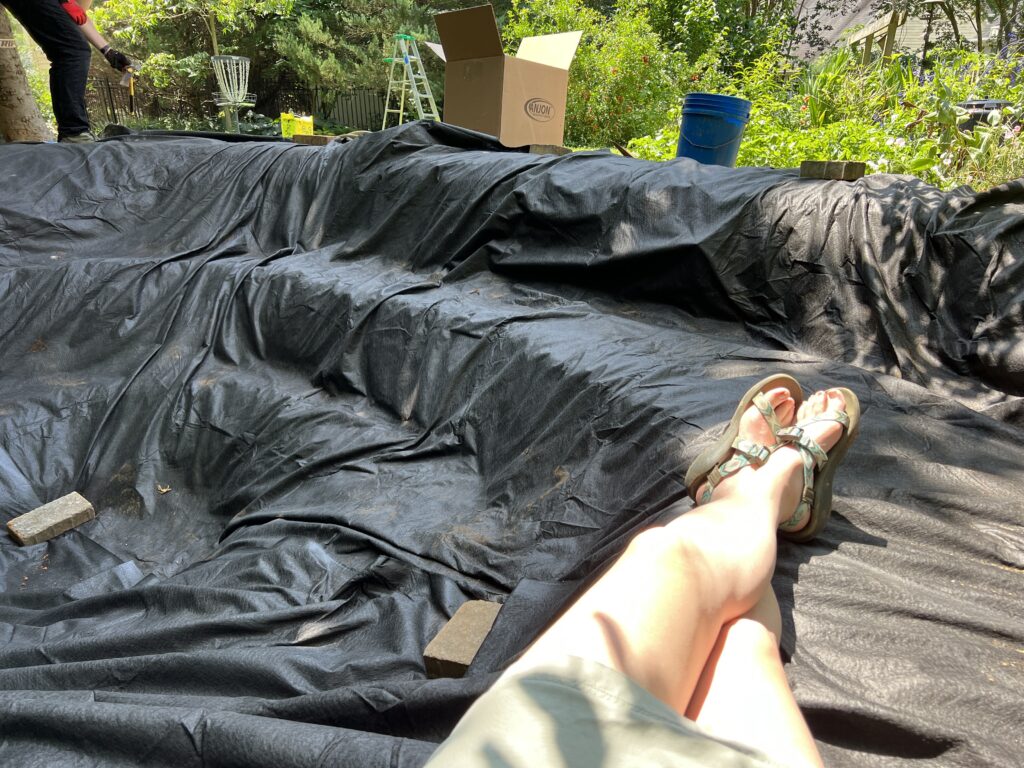
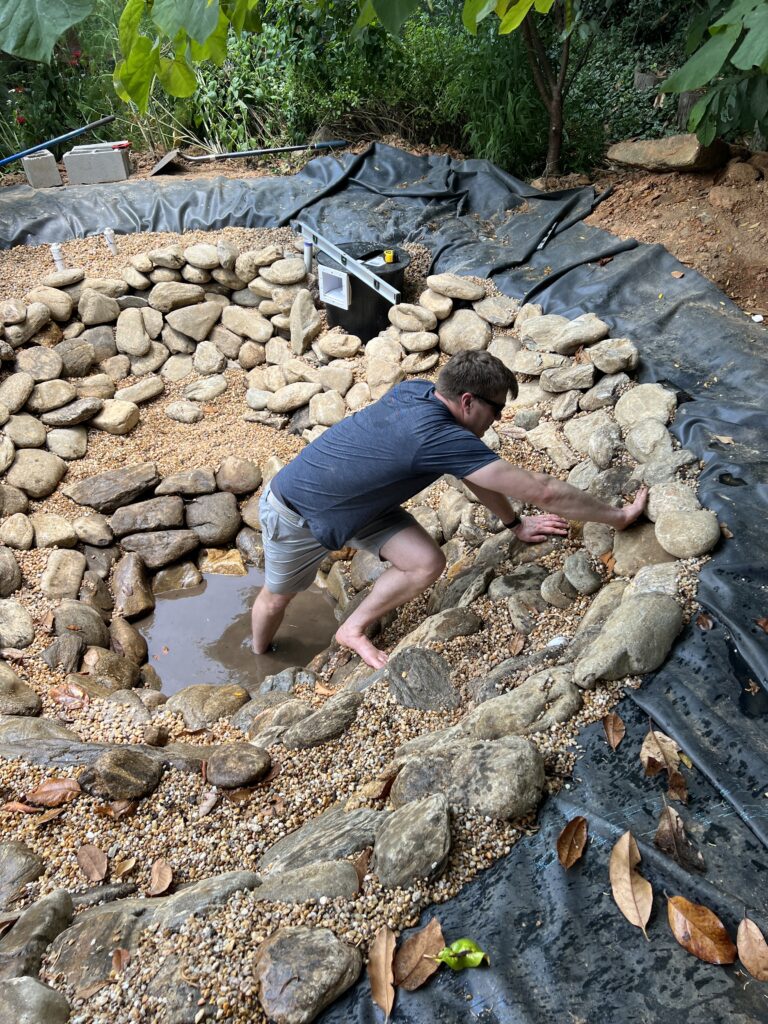
Pump & Housing
The 5000 GPH Pond Boss Waterfall Pump, sits in an 18 in. x 22 in. Sump Pump Basin ($40 from Home Depot) that we notched out to support a $70 pool skimmer from a local pool supply store. The basket portion was cut out and the face was painted black to match the basin. Instead of the small simmer basket, we use a PVC large pump barrier bag for collection from the skimmer. and a regular mesh pump barrier bag on the pump. The outflow pipe goes under the hill to a splitter. The basin is prone to floating up when then water is drawn down too quickly by the pump, so there is one line to return part of the flow back to the basin and landscape pavers to weigh it down. There are two other lines which deliver flow to the bog filter and to the waterfall. The flow rates can each be adjusted to fine-tune how much flow is diverted to each. In the first image, the outflow pipe, the return pipe and the bog filter pipe are visible. The splitter and valves are located behind the waterfall hill, supported by cinder blocks. We still have some landscaping to do around this area, but are waiting on cooler weather to transplant some ferns.
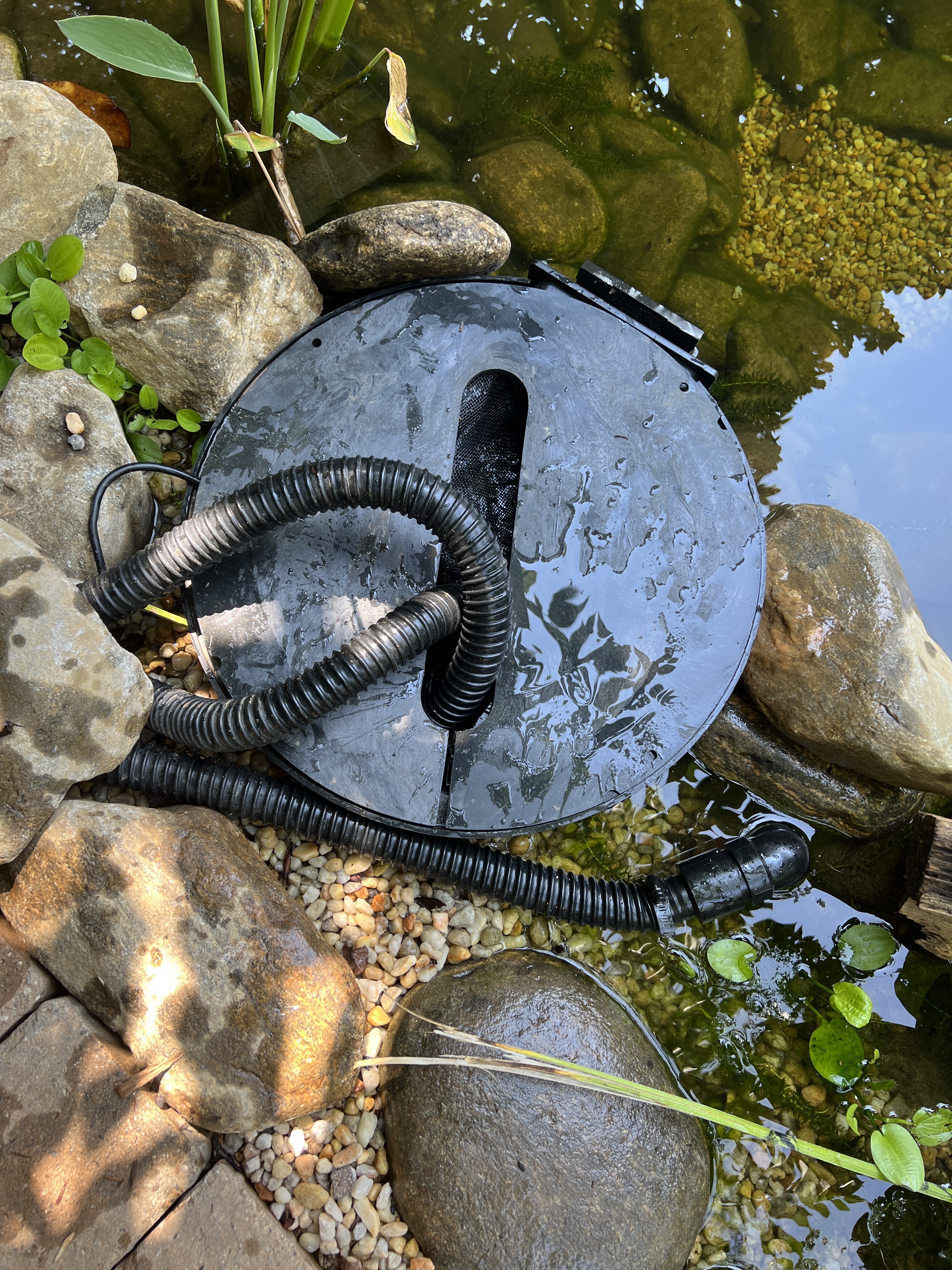
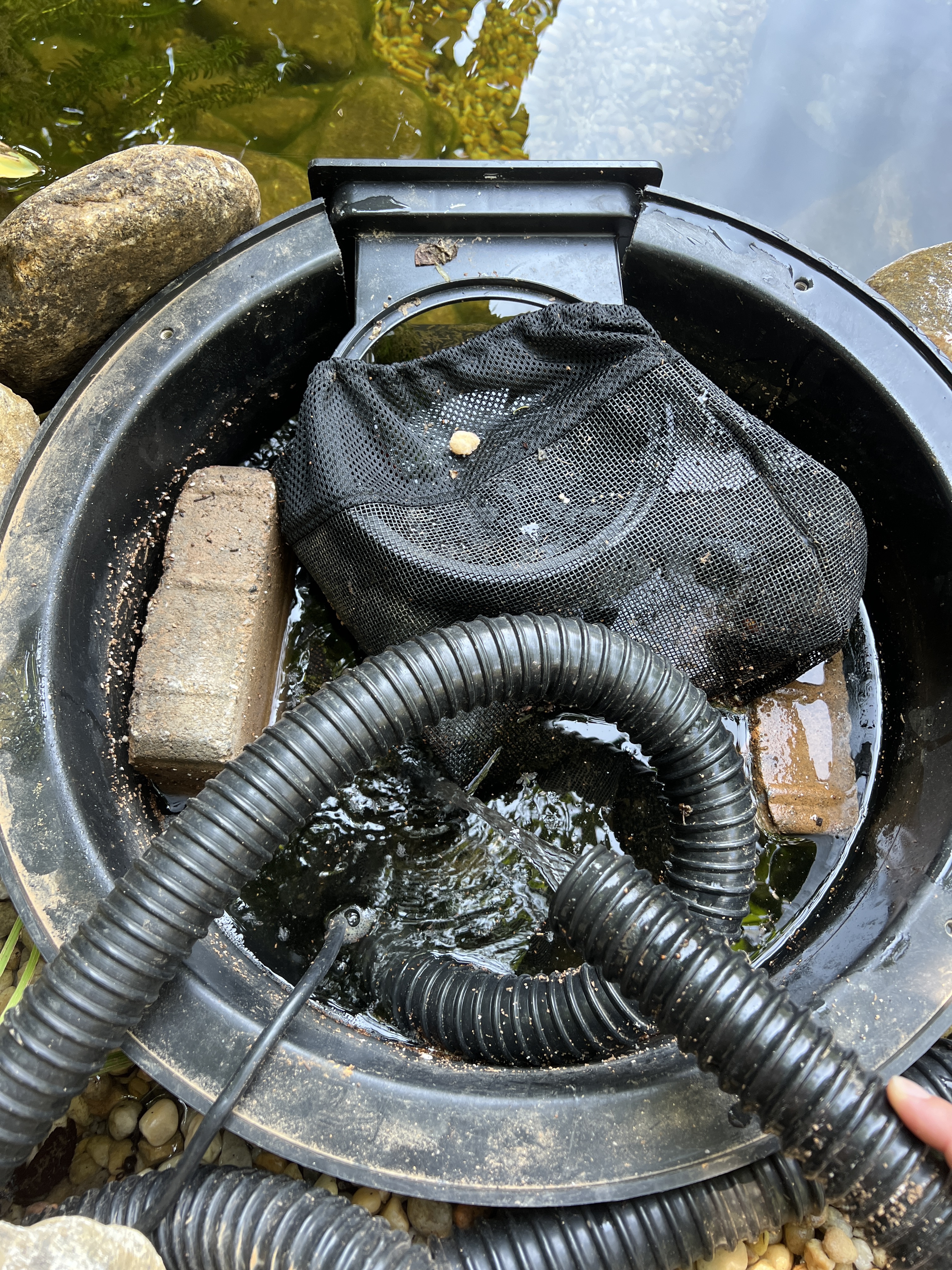
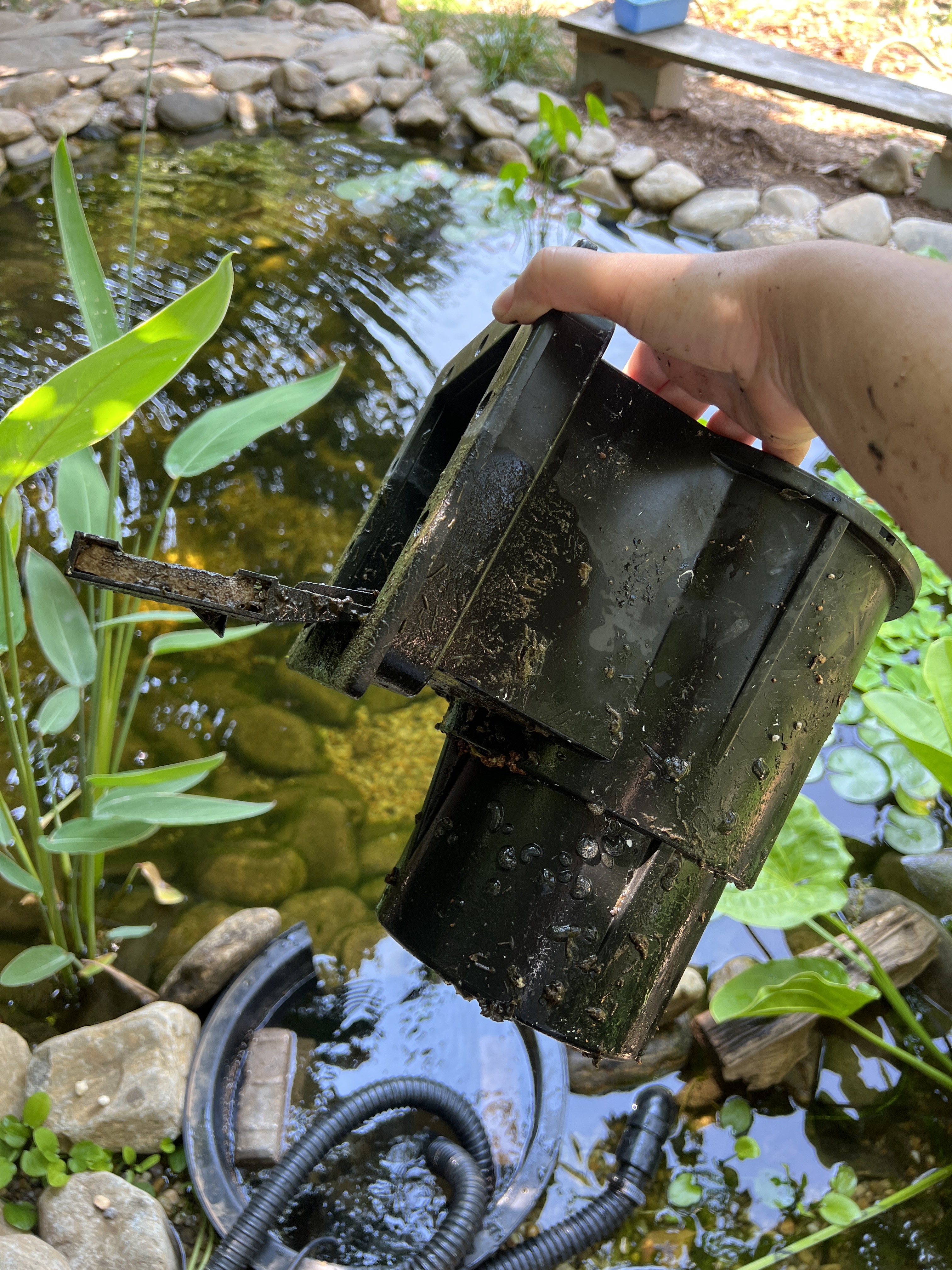
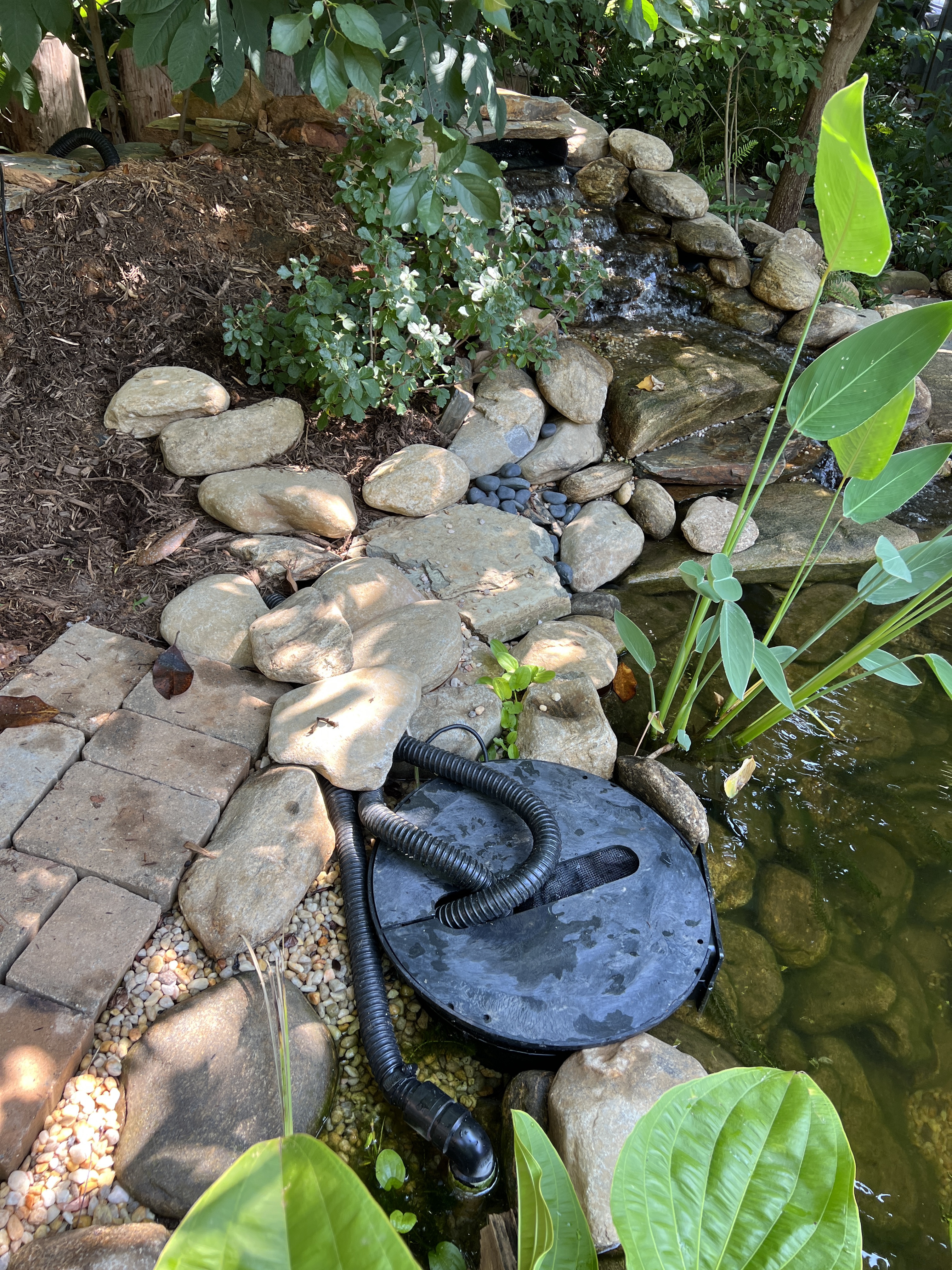
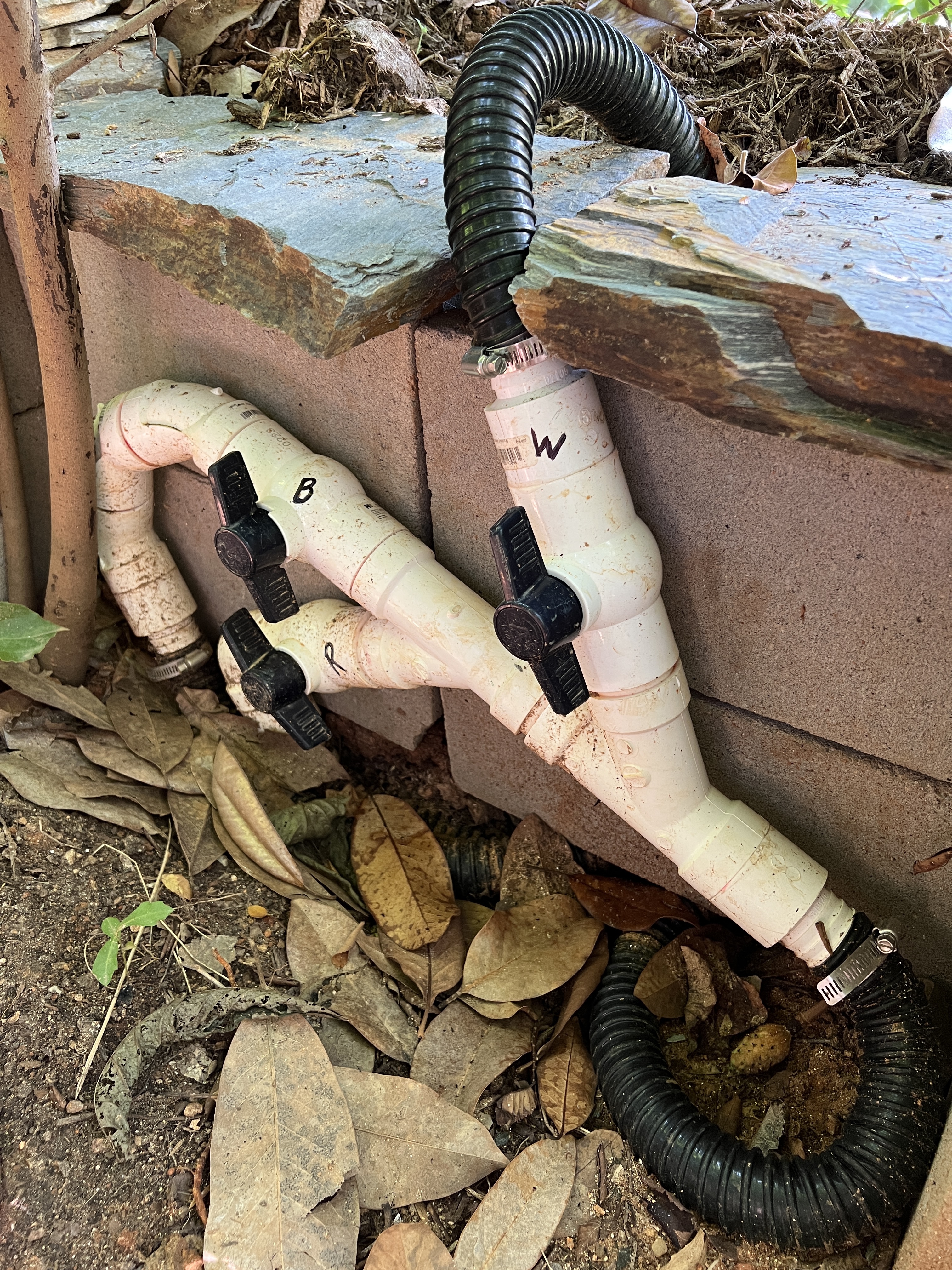
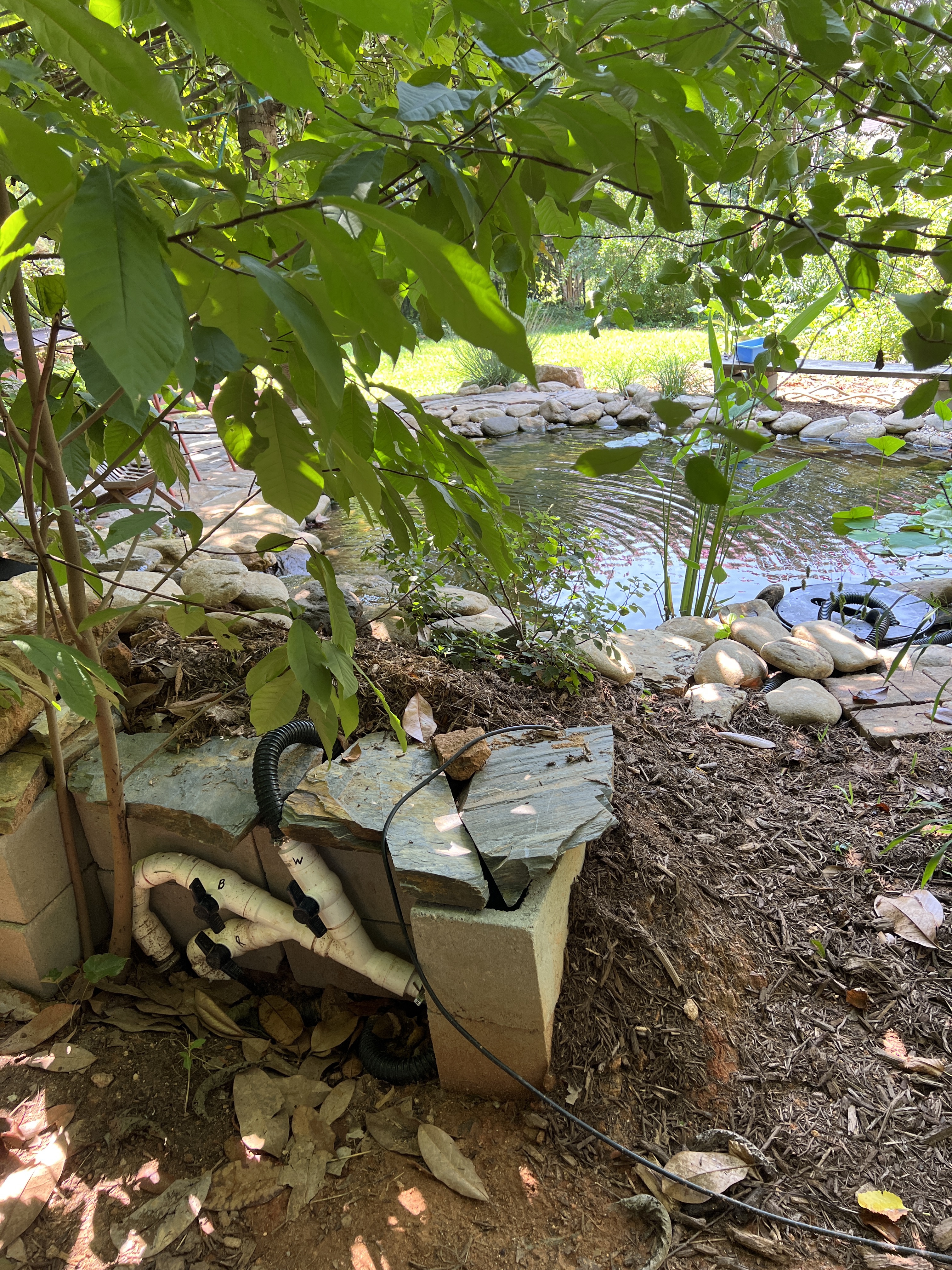
Gravel Bog Filter
Size recommendations for a bog filter are typically given as a surface area ratio. Our bog to pond surface area ratio is 10%. This is on the lower end of what is recommended for just plants and fish. If we were going to use this as a swimming pond, it would need to be double the size; however, this is not our only point of filtration. The 14”, deep 1 1/2” SCH 40 distribution pipes are laid in parallel under about 10 – 12” of pea gravel. Each pipe has 1/4” holes at a 45-degree angle from the bed and a flush out pipe and cap at the end. The water is ponded 1-2” deep above the gravel.
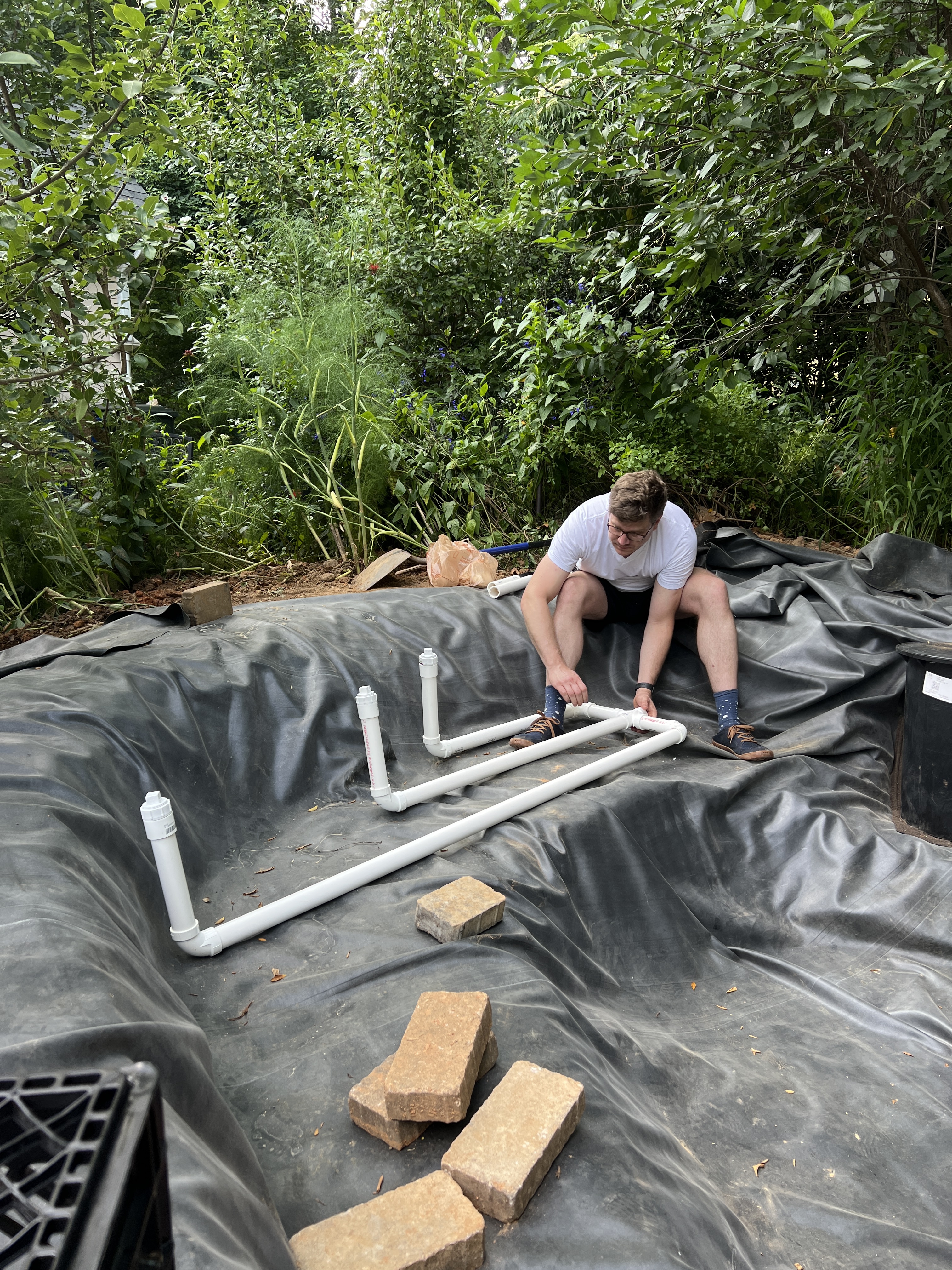
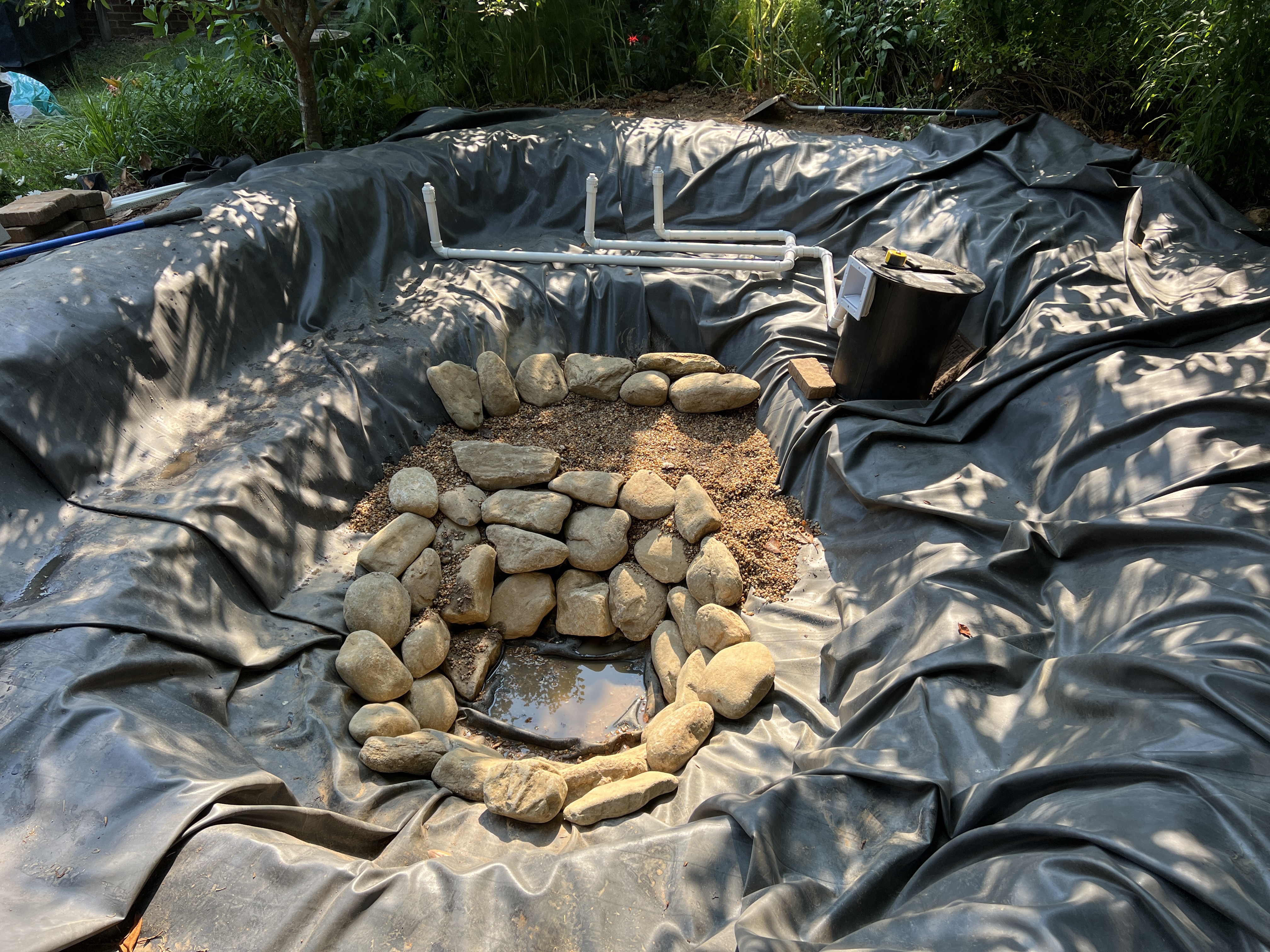

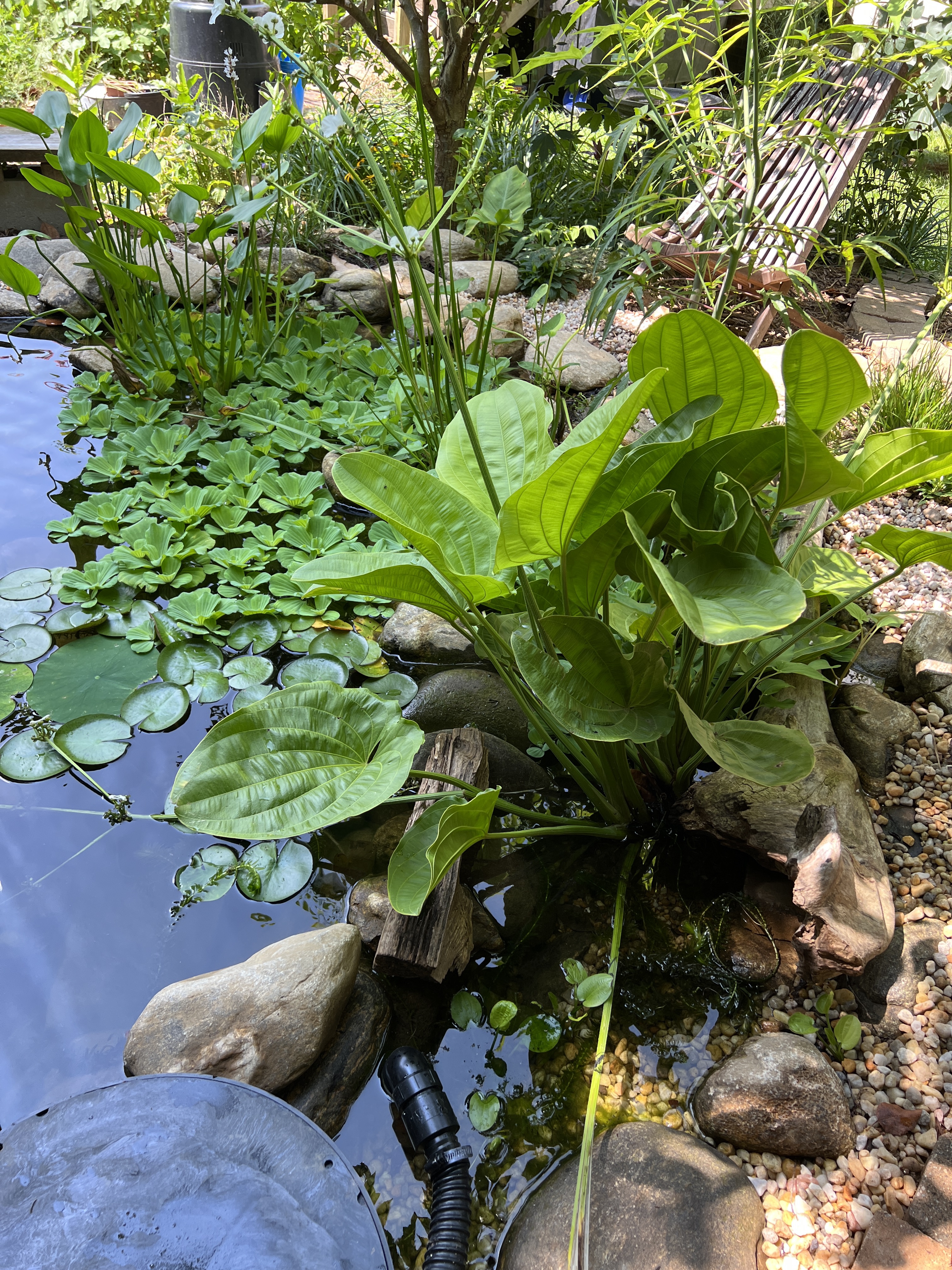
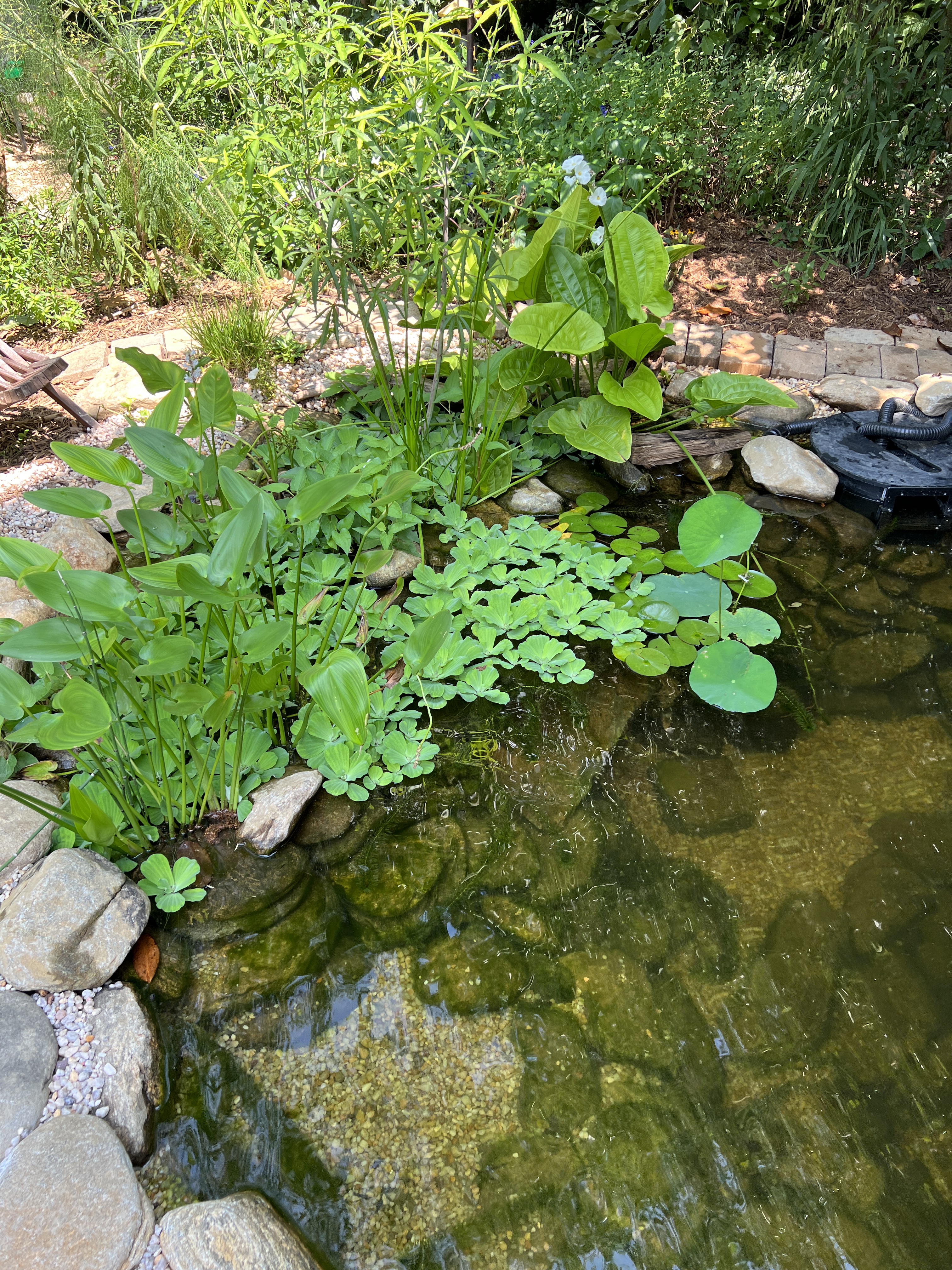
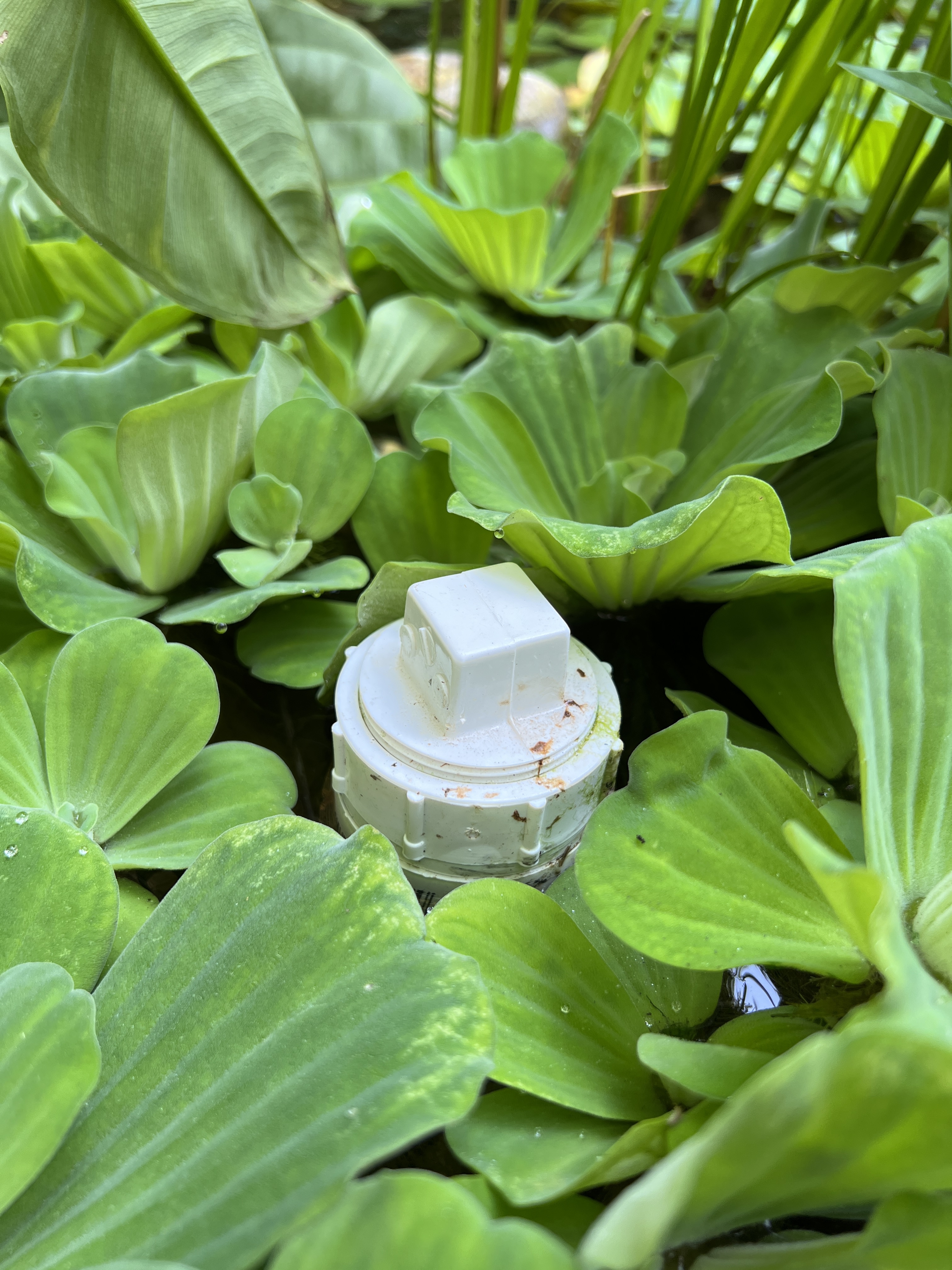
Pond Plant Catalog
Over the years I have worked to transition our yard to mostly native perennials where possible. This applies to pond plants as well. Plants in the gravel bog are planted without soil or pots, with the exception of the horsetail which can quickly spread and take over. The lotus and the waterlilies are also in pots in a sandy substrate. These will require regular feeding with aquatic plant food tablets. In the water: 1. Scarlet Rosemallow (Hibiscus coccineus) 2. Horsetail (equisetum) and water lettuce (Pistia) 3. Sweetflag (Acorus calamus) and lizard’s tail (Saururus cernuus) 4. American lotus (Nelumbo lutea) and water lily (unknown var) 5. Waterweed (Elodea canadensis?) 6. Amazon Sword (Echinodorus bracteatus ‘Lantau Lady’) 7. Arrow arum (Peltandra) 8. Pickerel weed (Pontederia cordata) 9. Broadleaf arrowhead (Sagittaria latifolia – I need confirmation on this, the plant wasn’t labeled) 10. Hardy Cana (Thalia dealbata) 11. Lizard’s tail (Saururus cernuus) 12. Frog on water lettuce (Pistia Stratiotes)
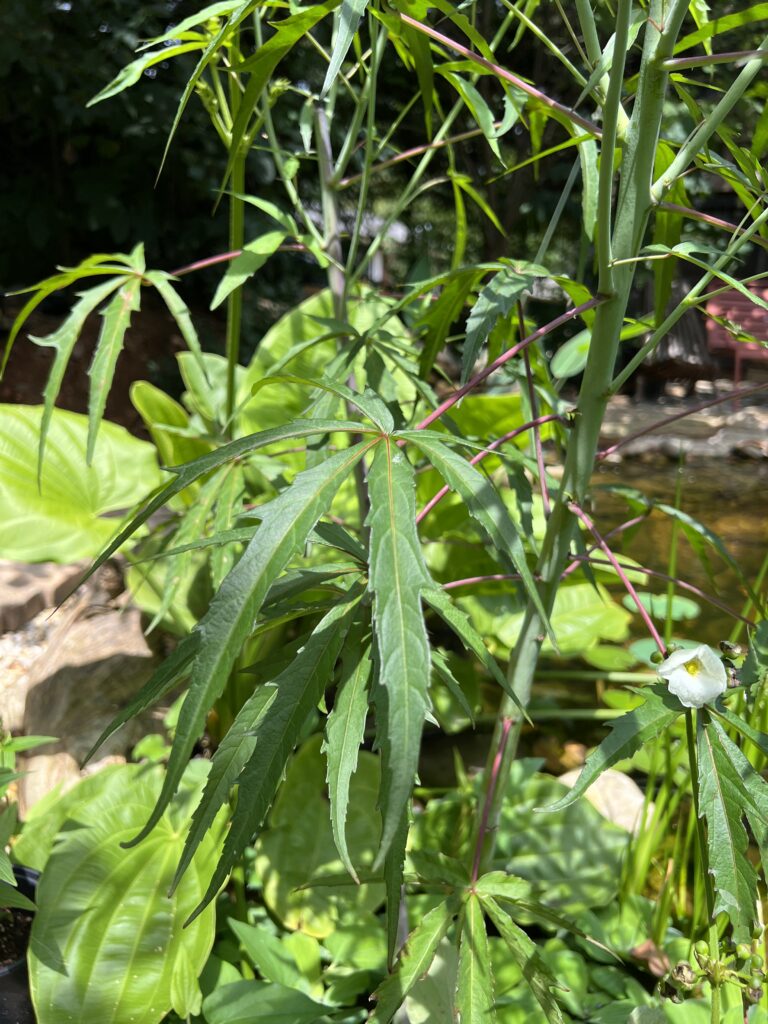
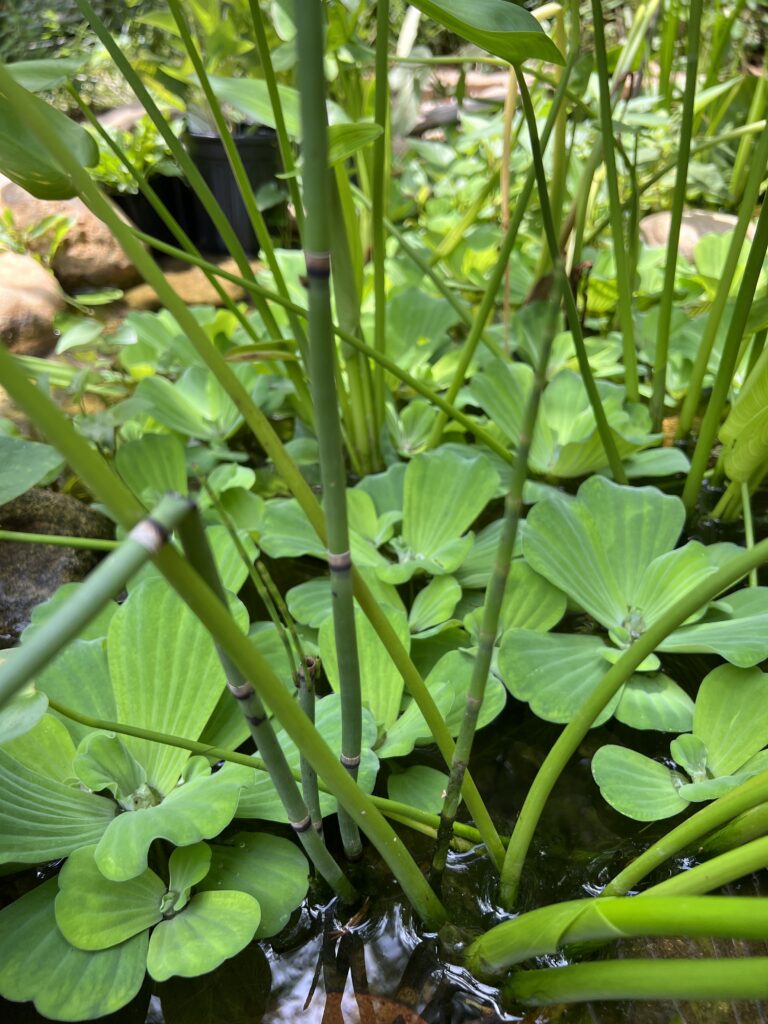
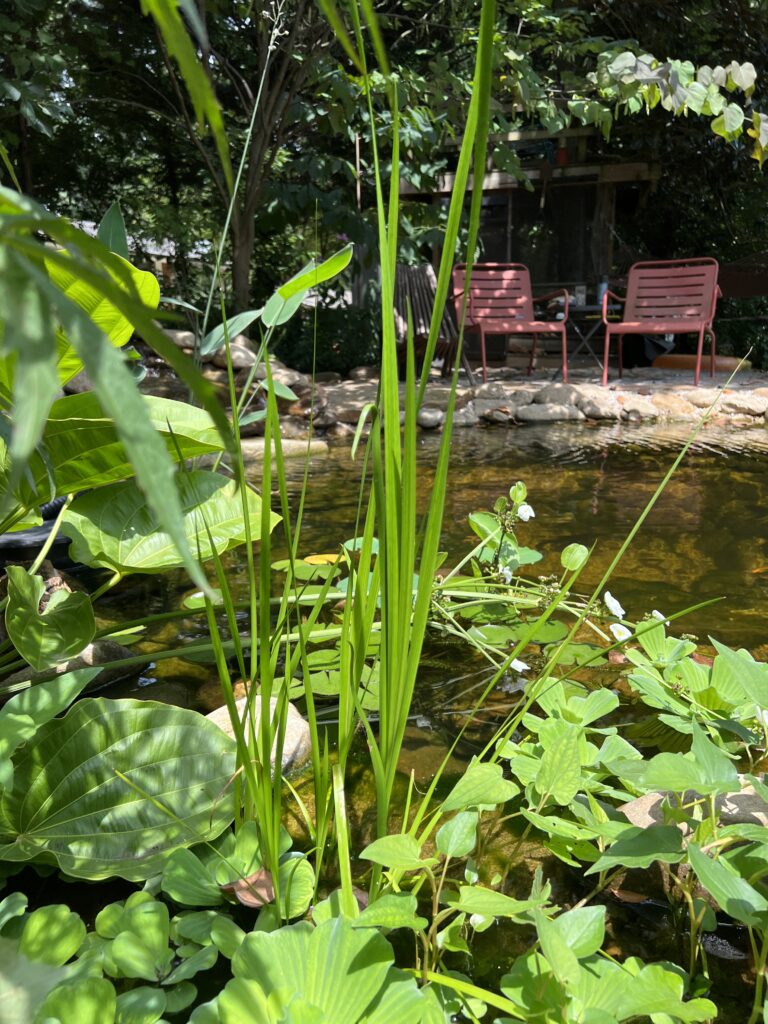
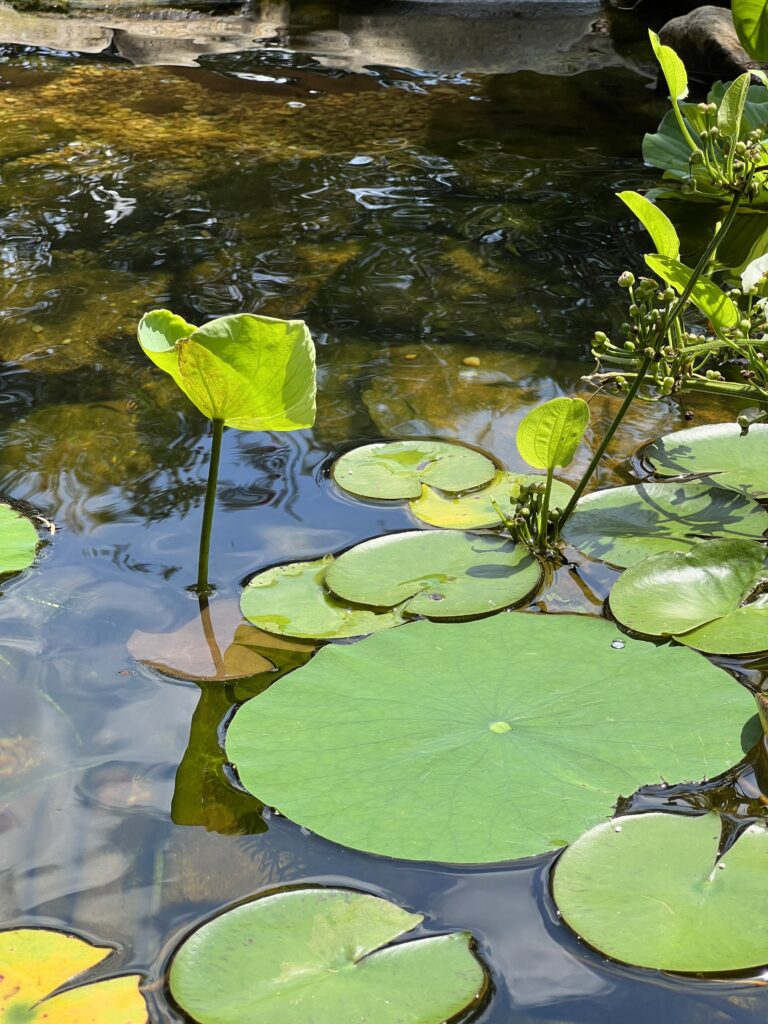
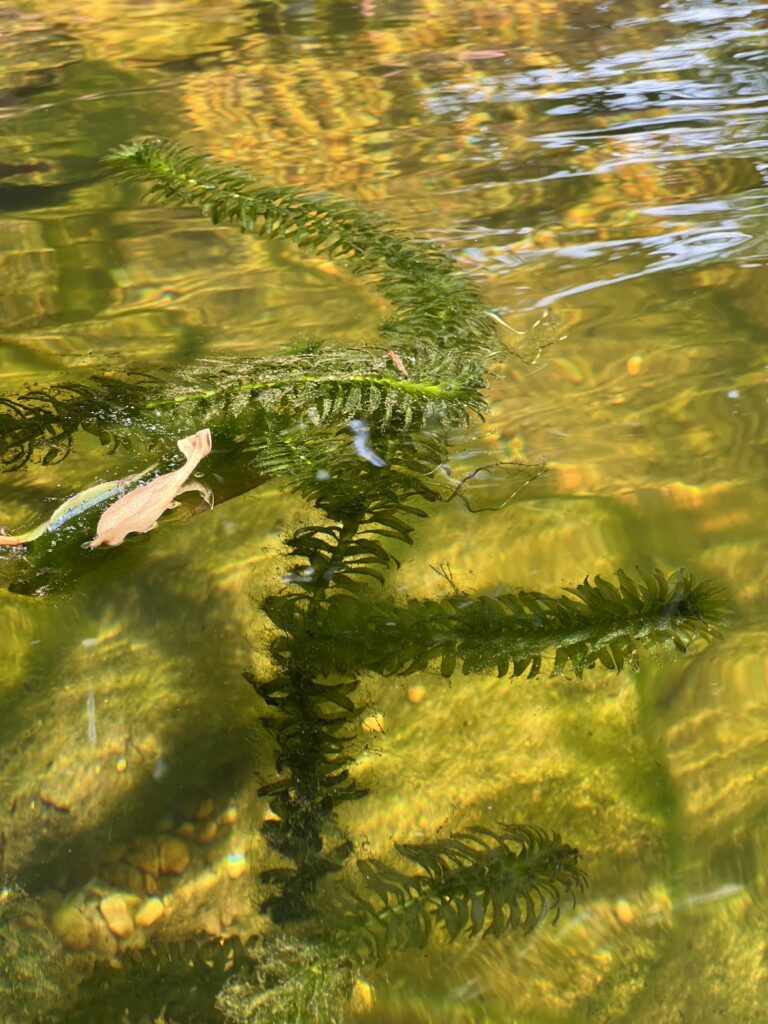
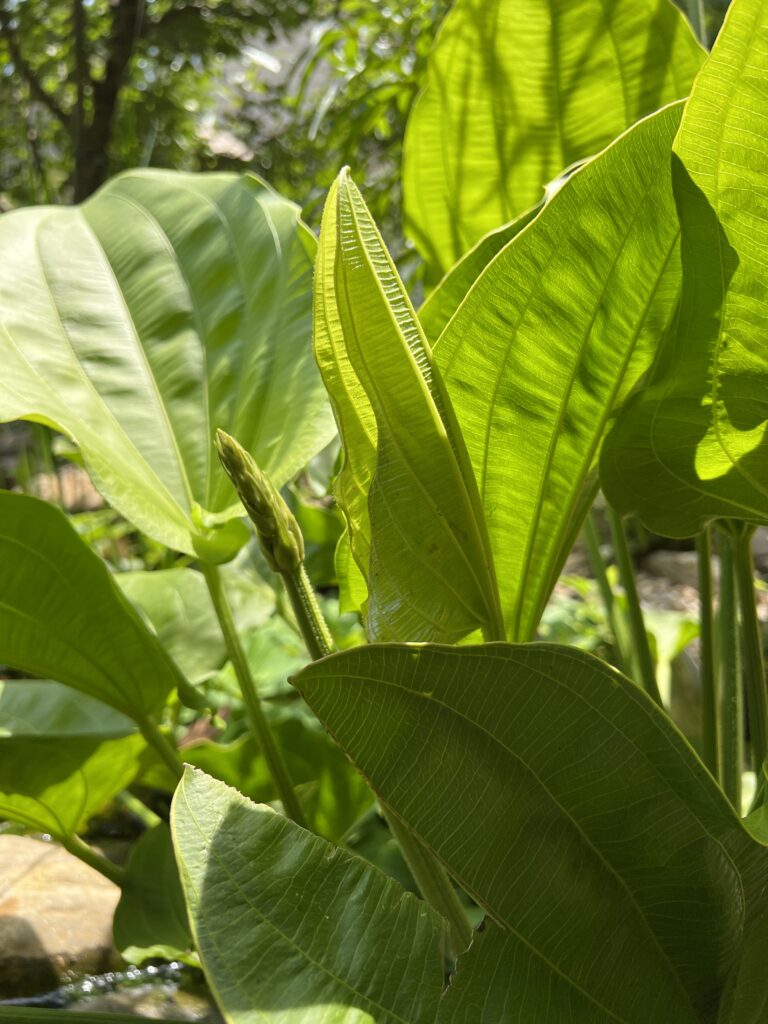
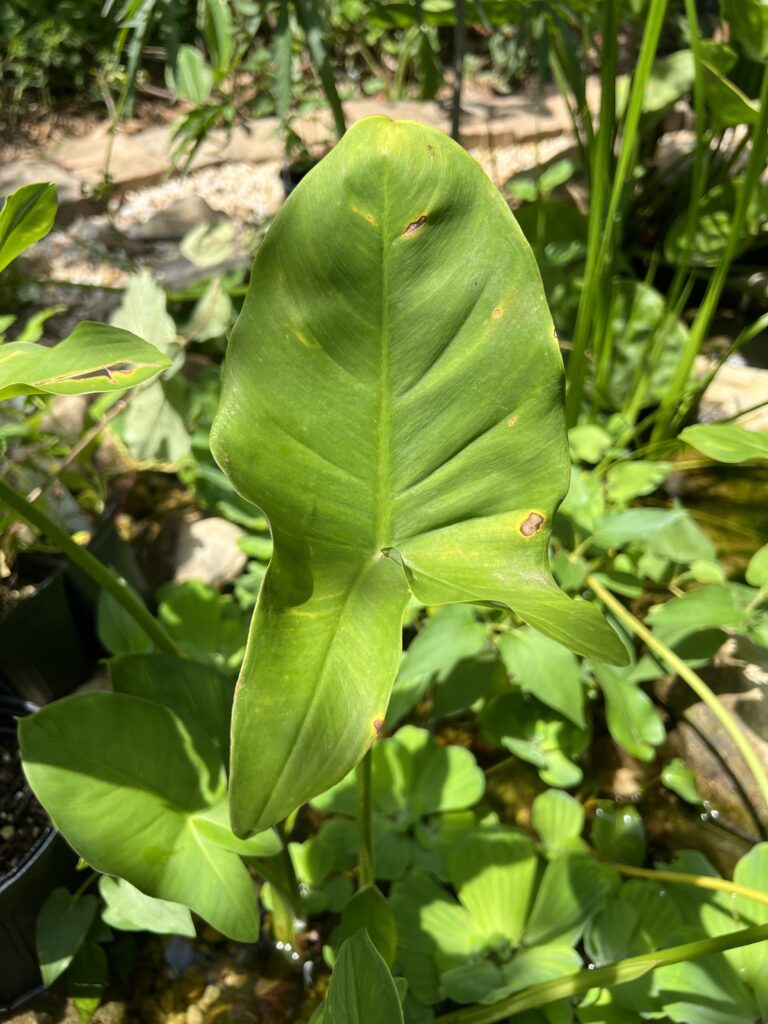
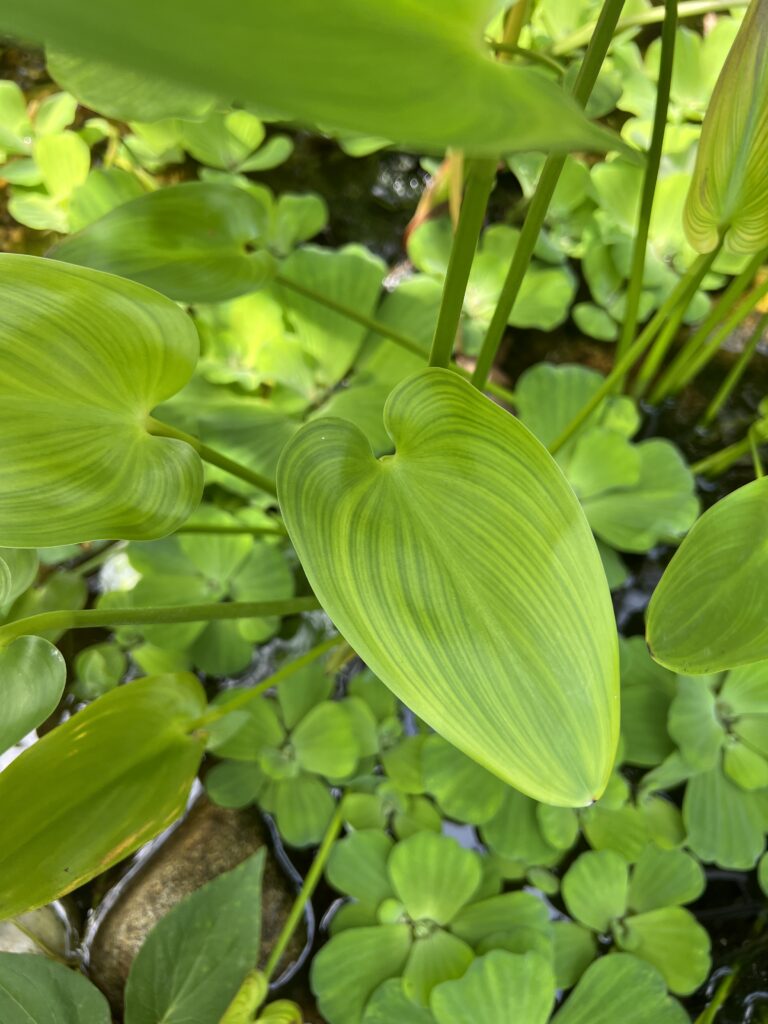
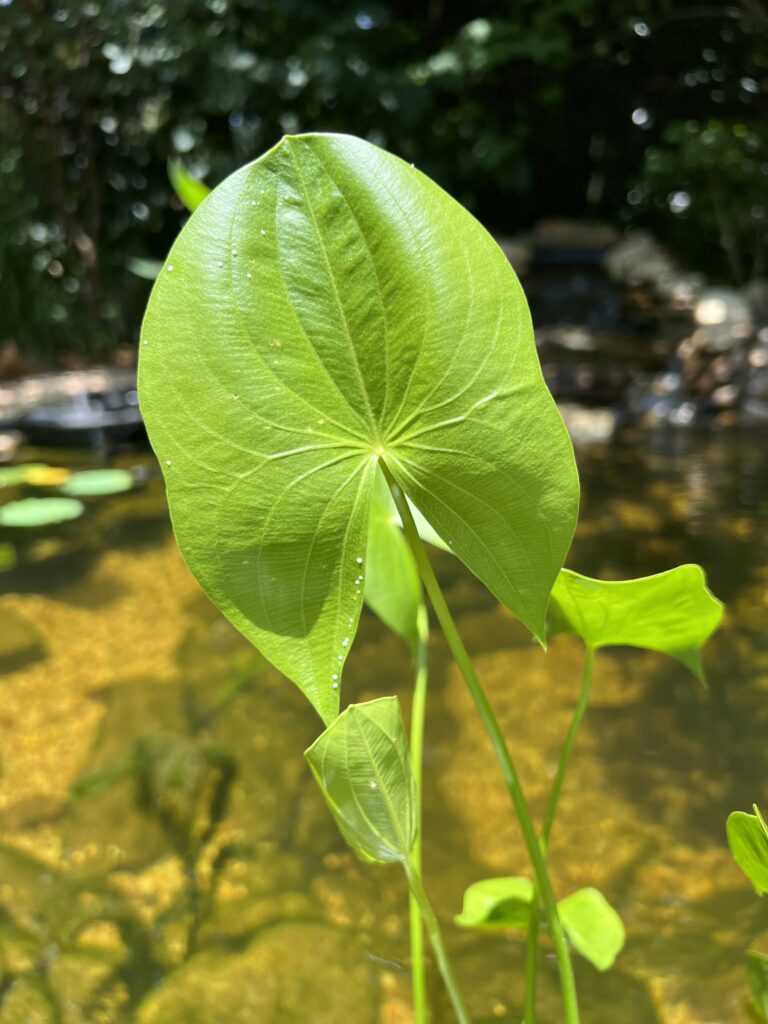
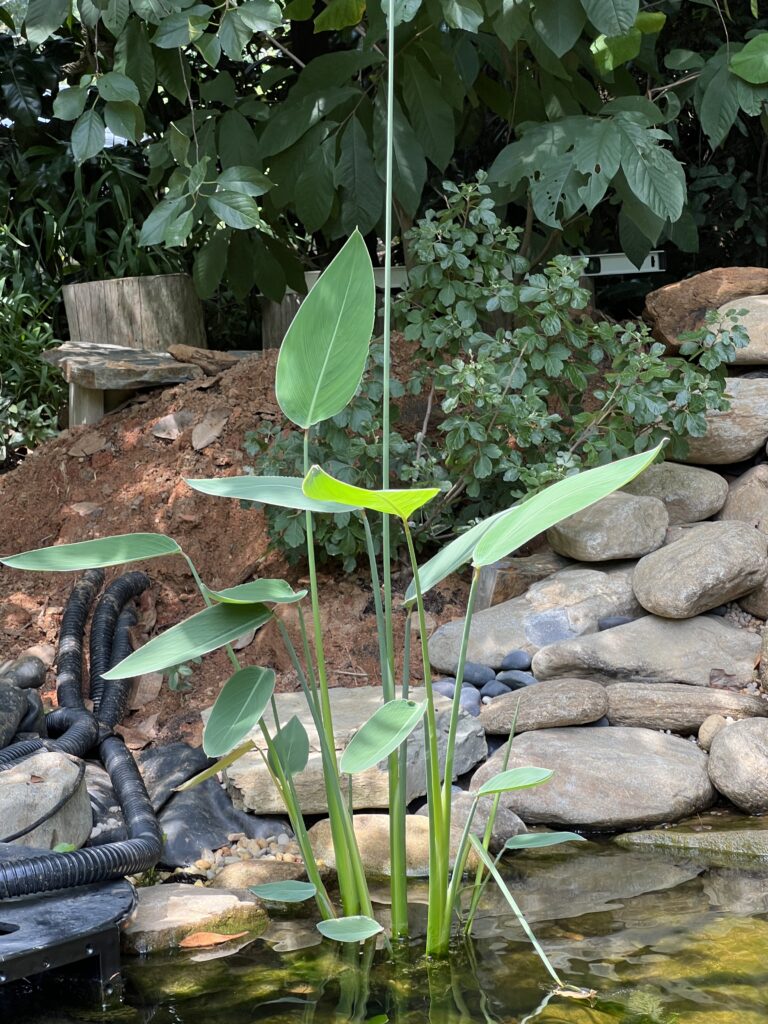
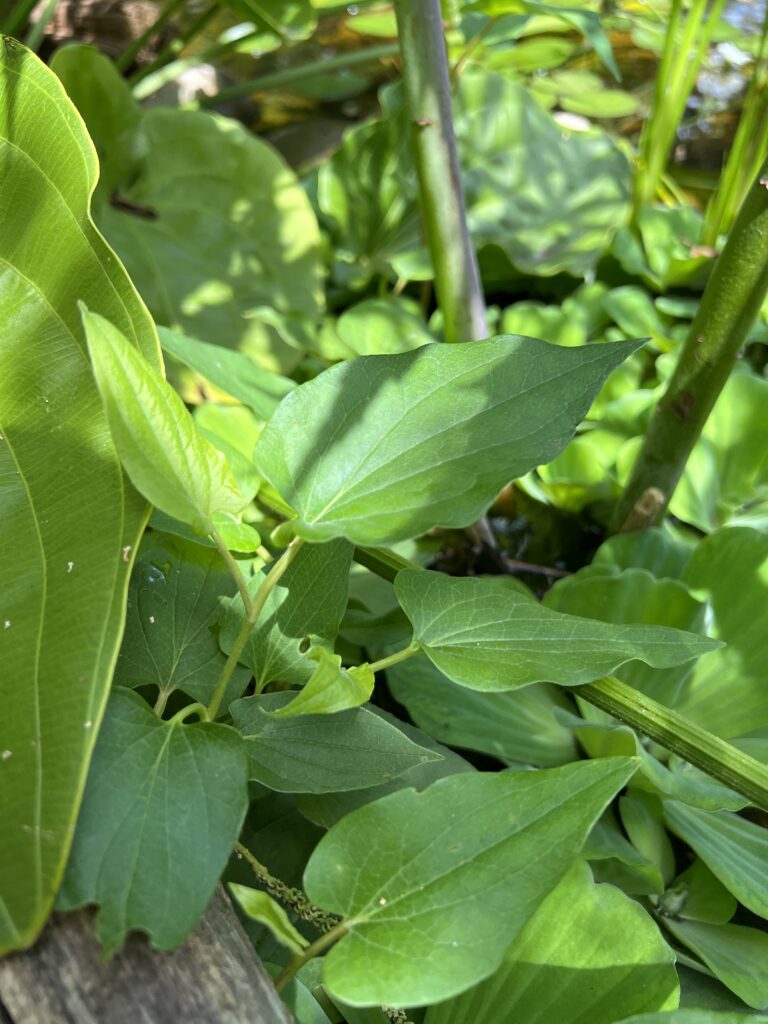
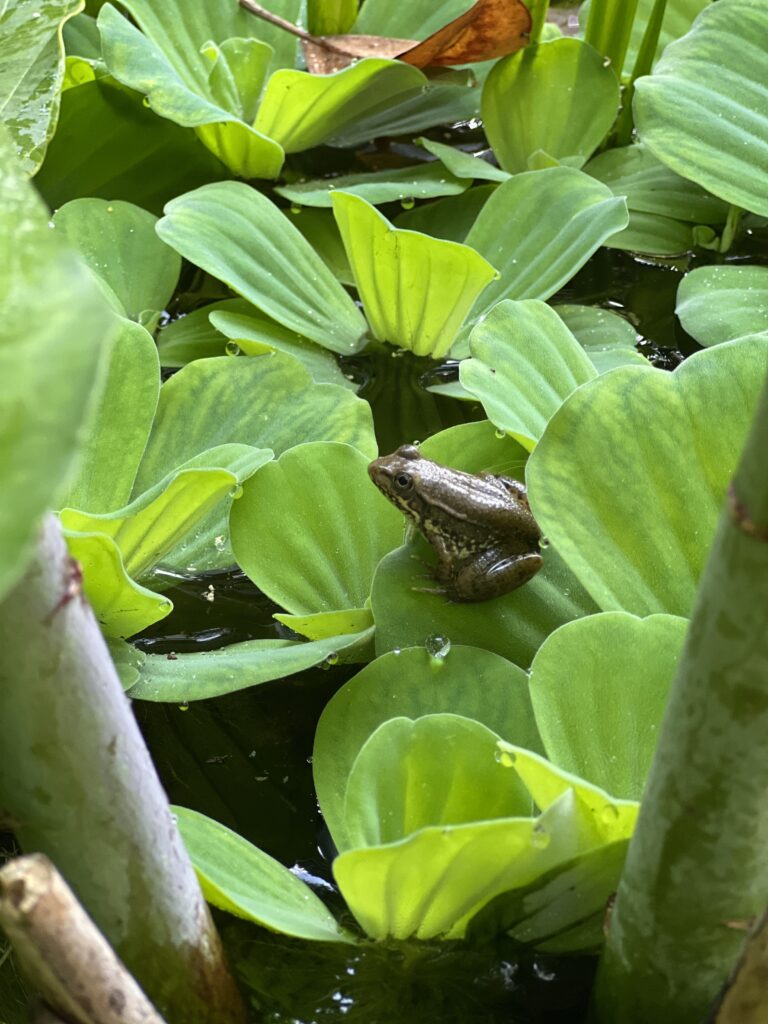
Waterfall
By far the most fun and aesthetic part of the project was the waterfall. As we excavated the pond, we mounded up part of it on the upslope side of the pond knowing we’d like a water feature starting at a higher elevation. Once we finished lining the pond, we contoured the mound with what we estimated would be the overfall steps and used a 5 ft. x 5 ft. 45 Mil EPDM Rubber LifeGuard Pond Liner. We were fortunate to have three large rocks we’d excavated back in 2020 when trying to plant a fruit tree, and one of these was used as a viewing seat next to the waterfall, one was the base step of the waterfall, and the third was half submerged as a step to blend the waterfall into the pond. For the waterfall basin, we used a Pro Line Pro3000 Waterfall Box with Bio Matrix Media. I plan to add some filter padding for the finer materials, but the water is currently crystal clear.
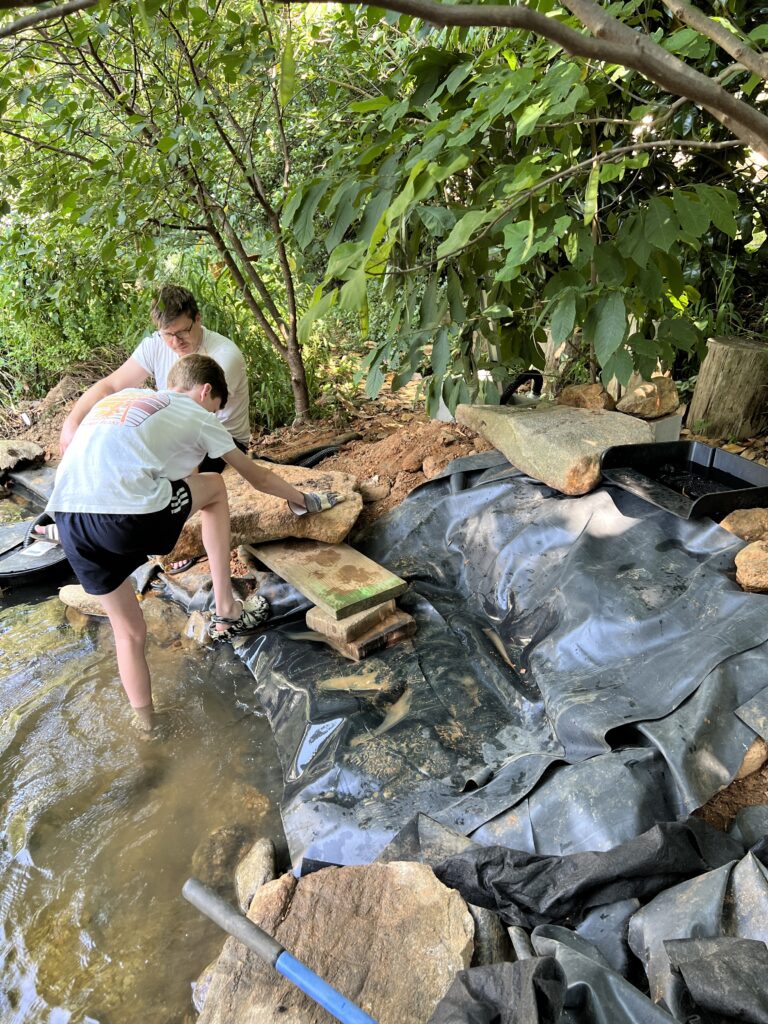
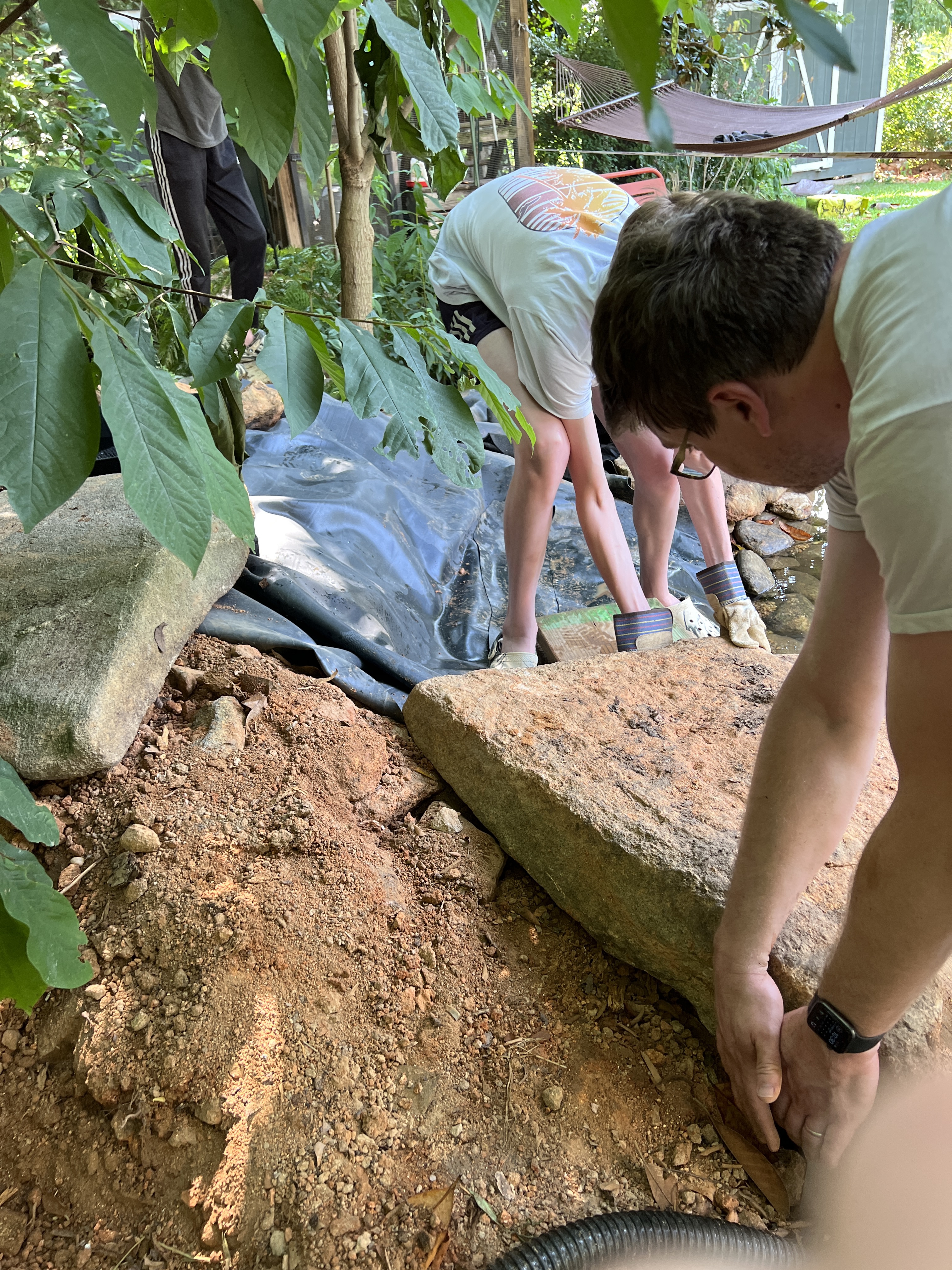
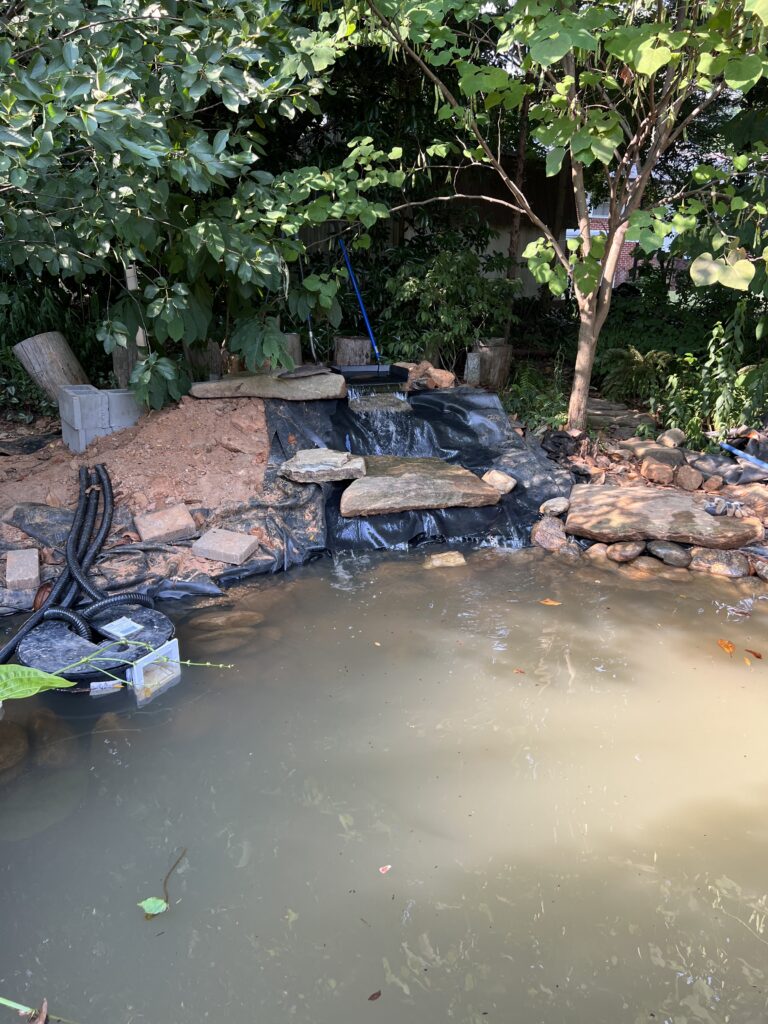
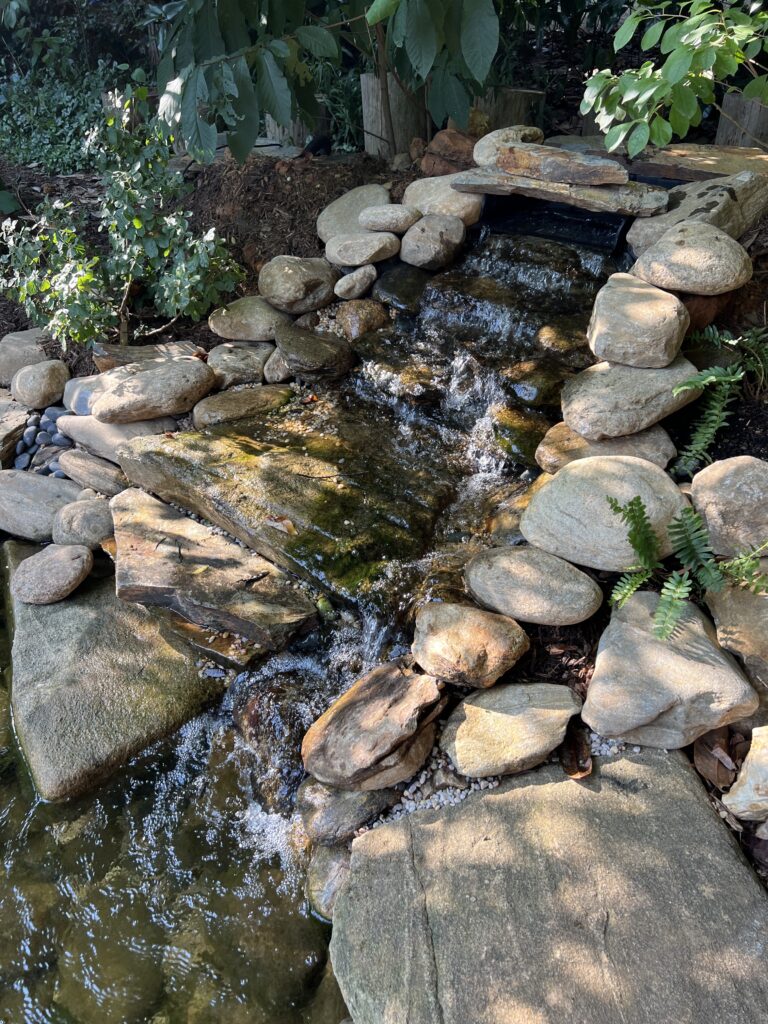
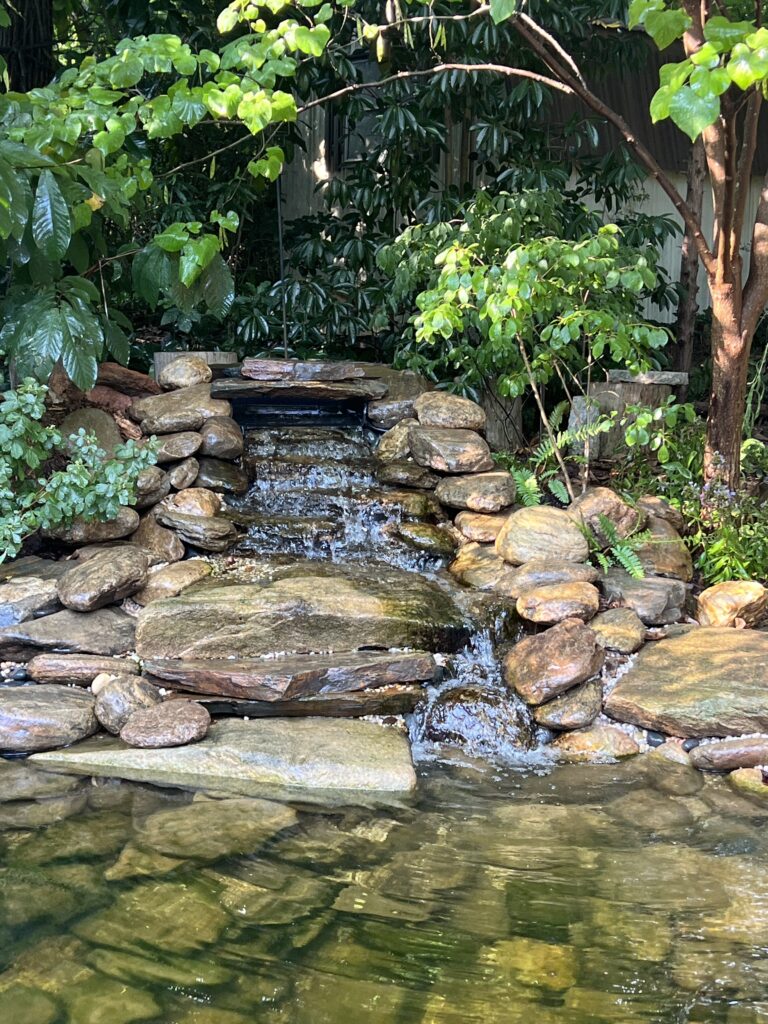
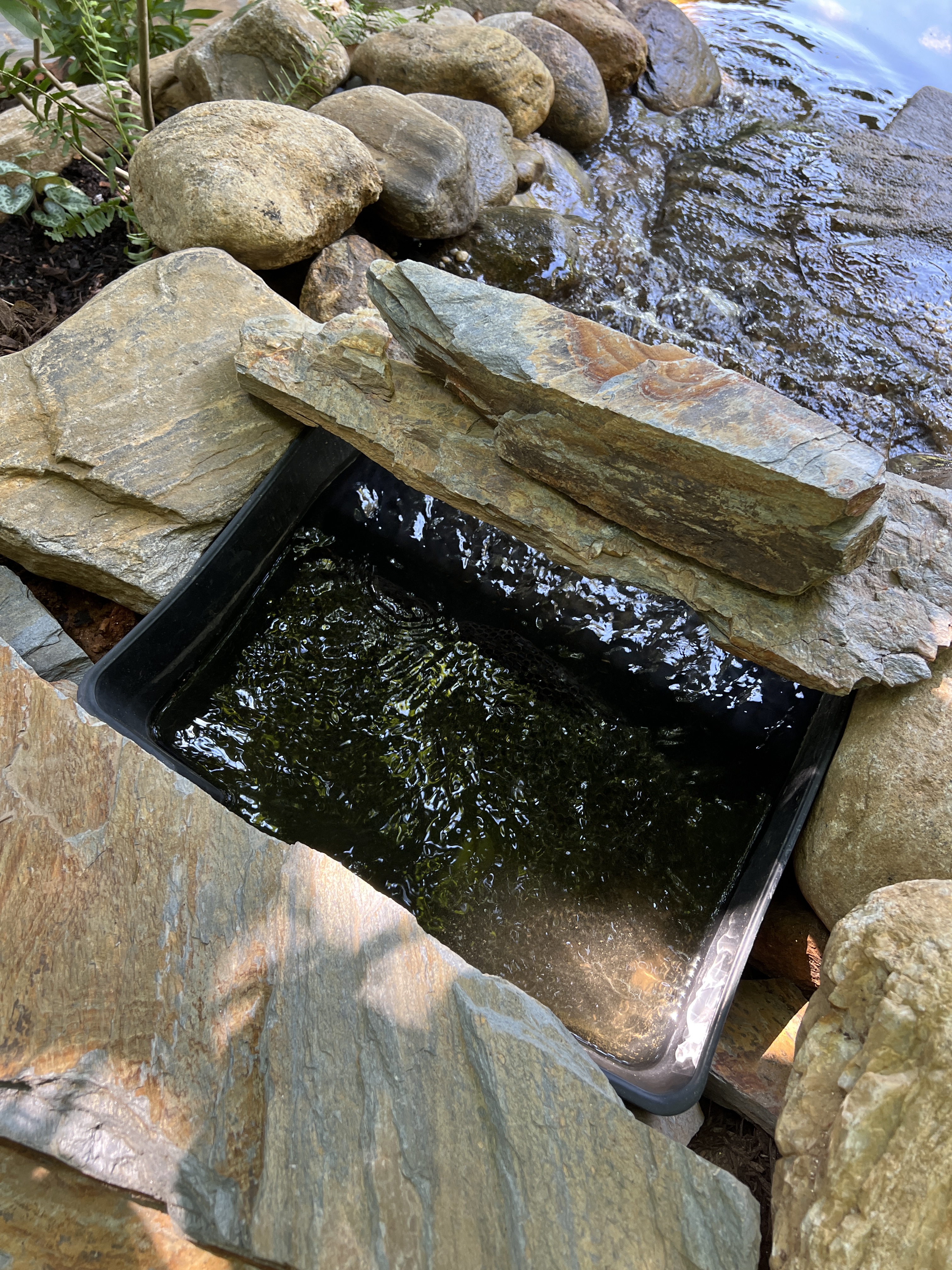
How will the pond impact the value of your home?
As homeowners, we can’t help worrying about how our landscape alterations will impact the resale value of our home. I honestly have no idea if or when we will ever move or how this would impact the pool of potential buyers. What I’d rather ask is, “How will this add ecological value to the land I am stewarding?” Because this is not a stormwater pond and has a synthetic liner, it is not serving to alter or treat the runoff on our property and does not connect to the groundwater. What it does provide, however, is habitat and resources to frogs, fish, birds and insects and other mammals which helps prevent the loss of biodiversity and the ongoing fragmentation of habitats.
Resources
BOG GARDENS AND BOG FILTERS (aquarium connection.com)
How to design a backyard pond with bog filter, intake bay and stream (Ozonds on YouTube)
Why are pond skimmers so expensive? (Ozonds on YouTube)
Pond plants are a vital part of a balanced aquatic ecosystem (Michigan State University)
EFFECTS OF HABITAT FRAGMENTATION ON BIODIVERSITY (Annu. Rev. Ecol. Evol. Syst.)
This post contains affiliate links. If you use these links to buy something we may earn a commission
